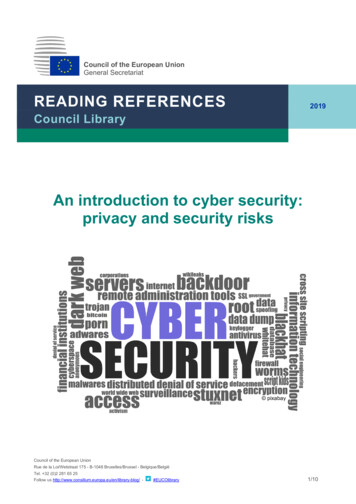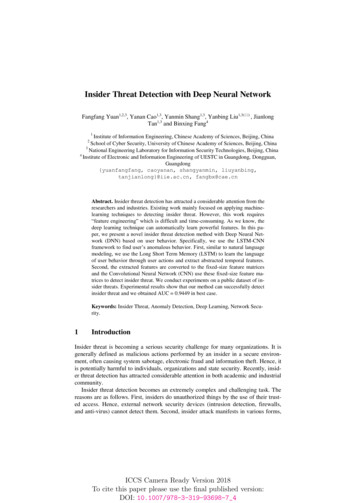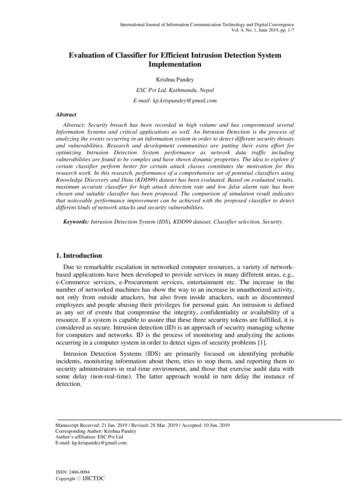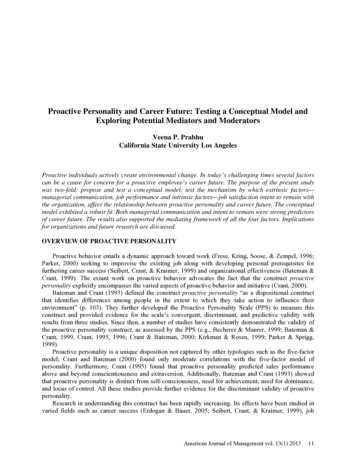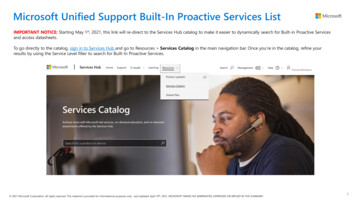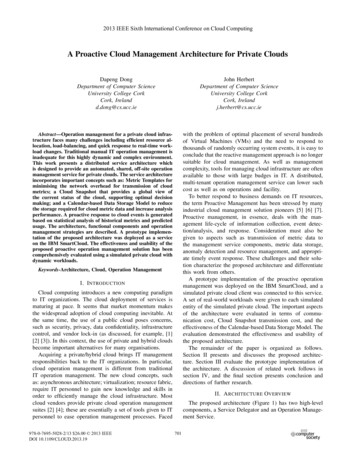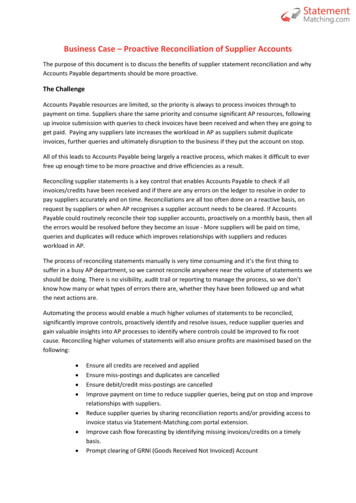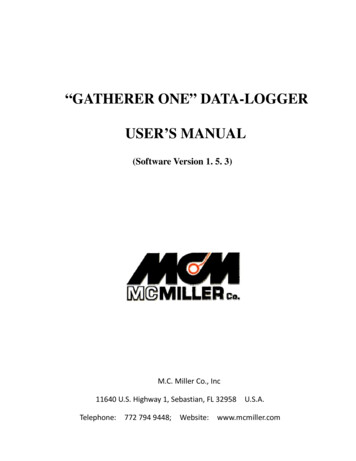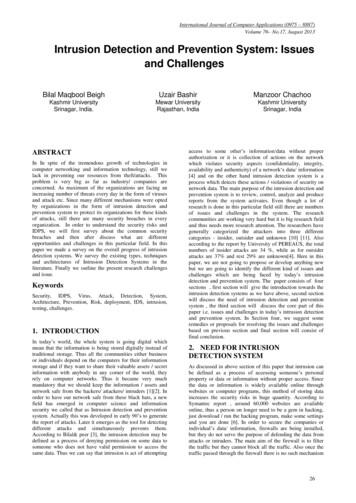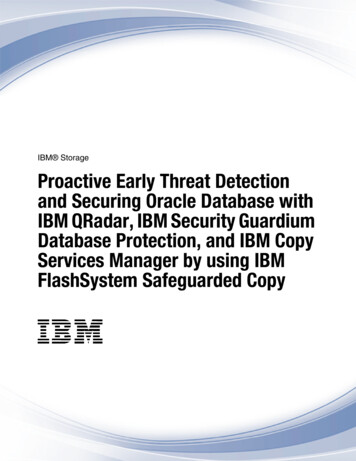
Transcription
IBM StorageProactive Early Threat Detectionand Securing Oracle Database withIBM QRadar, IBM Security GuardiumDatabase Protection, and IBM CopyServices Manager by using IBMFlashSystem Safeguarded Copy
Copyright International Business Machines Corporation 2022.US Government Users Restricted Rights – Use, duplication or disclosure restricted by GSA ADP ScheduleContract with IBM Corp.
ContentsAbout this document . . . . . . . . . . . . . . . . . . . . . . . . . . . . . . . . . . . . . . . . . . . . . . . . . . . . . . 1Executive summary . . . . . . . . . . . . . . . . . . . . . . . . . . . . . . . . . . . . . . . . . . . . . . . . . . . . . . . . 2Scope . . . . . . . . . . . . . . . . . . . . . . . . . . . . . . . . . . . . . . . . . . . . . . . . . . . . . . . . . . . . . . . . . . . 3Introduction . . . . . . . . . . . . . . . . . . . . . . . . . . . . . . . . . . . . . . . . . . . . . . . . . . . . . . . . . . . . . . 4IBM FlashSystem Safeguarded Copy function . . . . . . . . . . . . . . . . . . . . . . . . . . . . . . . . . . . 4IBM Security Guardium Data Protection . . . . . . . . . . . . . . . . . . . . . . . . . . . . . . . . . . . . . . . . 5IBM Copy Service Manager . . . . . . . . . . . . . . . . . . . . . . . . . . . . . . . . . . . . . . . . . . . . . . . . . . 5IBM QRadar Security Intelligence Platform . . . . . . . . . . . . . . . . . . . . . . . . . . . . . . . . . . . . . . 6Prerequisites . . . . . . . . . . . . . . . . . . . . . . . . . . . . . . . . . . . . . . . . . . . . . . . . . . . . . . . . . . . . . 6Solution overview . . . . . . . . . . . . . . . . . . . . . . . . . . . . . . . . . . . . . . . . . . . . . . . . . . . . . . . . . . 7Control path use cases . . . . . . . . . . . . . . . . . . . . . . . . . . . . . . . . . . . . . . . . . . . . . . . . . . . . . 8Data path use case . . . . . . . . . . . . . . . . . . . . . . . . . . . . . . . . . . . . . . . . . . . . . . . . . . . . . . 9Lab setup . . . . . . . . . . . . . . . . . . . . . . . . . . . . . . . . . . . . . . . . . . . . . . . . . . . . . . . . . . . . . . . . 9IBM FlashSystem . . . . . . . . . . . . . . . . . . . . . . . . . . . . . . . . . . . . . . . . . . . . . . . . . . . . . . 10IBM Security Guardium Data Protection . . . . . . . . . . . . . . . . . . . . . . . . . . . . . . . . . . . . . 12IBM Copy Services Manager . . . . . . . . . . . . . . . . . . . . . . . . . . . . . . . . . . . . . . . . . . . . . 17Creating Global Mirror session in IBM Copy Services Manager . . . . . . . . . . . . . . . . . . . 18Creating a scheduled task in IBM Copy Services Manager . . . . . . . . . . . . . . . . . . . . . . 20Threat detection by using IBM QRadar. . . . . . . . . . . . . . . . . . . . . . . . . . . . . . . . . . . . . . 25Other rule summaries . . . . . . . . . . . . . . . . . . . . . . . . . . . . . . . . . . . . . . . . . . . . . . . . . . . 32Brute force login attack on database or operating system . . . . . . . . . . . . . . . . . . . . . . . . . . 36Summary . . . . . . . . . . . . . . . . . . . . . . . . . . . . . . . . . . . . . . . . . . . . . . . . . . . . . . . . . . . . . . . 37Authors . . . . . . . . . . . . . . . . . . . . . . . . . . . . . . . . . . . . . . . . . . . . . . . . . . . . . . . . . . . . . . . . . 38Acknowledgment . . . . . . . . . . . . . . . . . . . . . . . . . . . . . . . . . . . . . . . . . . . . . . . . . . . . . . . . . 38Appendix A: Configuration for rsyslog daemon . . . . . . . . . . . . . . . . . . . . . . . . . . . . . . . . . . 39Appendix B: Sample regular expressions . . . . . . . . . . . . . . . . . . . . . . . . . . . . . . . . . . . . . . 40Resources . . . . . . . . . . . . . . . . . . . . . . . . . . . . . . . . . . . . . . . . . . . . . . . . . . . . . . . . . . . . . . 41Notices . . . . . . . . . . . . . . . . . . . . . . . . . . . . . . . . . . . . . . . . . . . . . . . . . . . . . . . . . . . . . . . .Trademarks . . . . . . . . . . . . . . . . . . . . . . . . . . . . . . . . . . . . . . . . . . . . . . . . . . . . . . . . . . . . .Terms and conditions for product documentation . . . . . . . . . . . . . . . . . . . . . . . . . . . . . . . .Applicability . . . . . . . . . . . . . . . . . . . . . . . . . . . . . . . . . . . . . . . . . . . . . . . . . . . . . . . . . . .Commercial use . . . . . . . . . . . . . . . . . . . . . . . . . . . . . . . . . . . . . . . . . . . . . . . . . . . . . . .Rights . . . . . . . . . . . . . . . . . . . . . . . . . . . . . . . . . . . . . . . . . . . . . . . . . . . . . . . . . . . . . . .Privacy policy considerations . . . . . . . . . . . . . . . . . . . . . . . . . . . . . . . . . . . . . . . . . . . . . Copyright IBM Corp. 2022.43444545454545i
iiProactive Early Threat Detection and Securing Oracle Database
About this documentThis IBM blueprint publication focuses on early threat detection within a databaseenvironment by using IBM Security Guardium Data Protection and IBM QRadar . It alsohighlights how to proactively start a cyber resilience workflow in response to a cyberattack orpotential malicious user actions.The workflow that is presented here uses IBM Copy Services Manager as orchestrationsoftware to start IBM FlashSystem Safeguarded Copy functions. The Safeguarded Copycreates an immutable copy of the data in an air-gapped form on the same IBM FlashSystemfor isolation and eventual quick recovery.This document describes how to enable and forward Oracle database user activities (by usingIBM Security Guardium Data Protection) and IBM FlashSystem audit logs by using IBMFlashSystem to IBM QRadar.This document also describes how to create various rules to determine a threat, andconfigure and launch a suitable response to the detected threat in IBM QRadar.The document also outlines the steps that are involved to create a Scheduled Task by usingIBM Copy Services Manager with various actions. Copyright IBM Corp. 2022.1
Executive summaryThe financial effect of cyberattacks continues to rise. Cyberattacks can occur in various ways.They can take the form of malware or ransomware that is targeted at stealing confidentialdata or holding valuable information for ransom.Sometimes, these attacks are designed to destroy confidential data to cripple organizations.In many cases, the data breaches involve internal threat actors.IBM Security Guardium Data Protection offers solutions to protect sensitive and regulateddata by continuously monitoring the data activity and accelerating compliance reporting thatsupports a zero trust approach to data management across environments, life cycles, andplatforms.Detecting a threat before it starts can help speed recovery even more.IBM QRadar is a Security Information and Event Management (SIEM) and threatmanagement system that monitors activities while looking for signs that might indicate thestart of an attack, such as logins from unusual IP addresses or outside business hours.Now, IBM QRadar can proactively start the Safeguarded Copy function to create a protectedbackup at the first sign of a threat.The IBM FlashSystem Safeguarded Copy function helps businesses recover quickly andsafely from a cyberattack, which helps reduce recovery to minutes or hours. It also createsmultiple recovery points for a production volume. These recovery points are calledSafeguarded Copy backups.The recovery data is not stored in separate regular volumes, but in a storage space that iscalled Safeguarded Copy backup capacity, which creates a logical air gap. The backups arenot directly accessible by a host. The data can be used only after a backup is recovered to aseparate Recovery volume.If an attack occurs, the orchestration software (IBM Copy Services Manager) helps createand identify the best Safeguarded backup to use. It also automates the process to restoredata to online volumes. Because a restore action uses the same snapshot technology, it isalmost instant; that is, it is much faster than the use of offline copies or copies that are storedin the cloud.2Proactive Early Threat Detection and Securing Oracle Database
ScopeThe focus of this document is to showcase the early threat detection in the form of potentialmalicious user actions, and database administrator’s actions on Oracle database by usingIBM Security Guardium Data Protection. The database host uses storage that is mappedfrom IBM FlashSystem.When potential malicious database activities are detected by IBM Security Guardium DataProtection, IBM FlashSystem storage audit events are forwarded to IBM QRadar by using thepreconfigured rules in IBM QRadar. The event data is analyzed to not only detect a potentialthreat, but also to proactively start Safeguarded Copy to create an immutable backup.IBM Copy Services Manager’s scheduled task function starts a predefined scheduled taskwith many actions. Although not covered here, IBM Copy Services Manager also can be usedto recover or restore the backup by using only a few steps.As part of early threat detection, several rules are described in this publication. Also, a samplePython script is used to start the Safeguarded Copy action that is provided. This documentalso explains several sample control path and data path use cases.Customers are encouraged create control path and data path use cases, customized IBMSecurity Guardium Data Protection policies, IBM QRadar rules, and custom response scriptsthat are best-suited to their environment.Although the use cases, rules, and Python script from this publication can be seen astemplates, they cannot be used in a real-world environment.The solution that is featured in this document is created by using the following products: IBM Security Guardium Data Protection 11.4IBM QRadar release 7.4.2IBM FlashSystem 7.4.xBM Copy Services Manager 6.3IBM Copy Services Manager Scheduled task sample workflow also is explained as part of thesolution, which includes the following process:1.2.3.4.Copying or mirroring of volumes is suspended.The user waits for a confirmation of that suspension.Safeguarded Copy is started.Copying or mirroring of the volumes resumes.Note: All components that are described in this blueprint, such as, IBM Security GuardiumData Protection, IBM QRadar, IBM Copy Services Manager, and IBM FlashSystem are insame network segment. Suitable network planning is required if these systems are indifferent network.For more information about IBM QRadar, IBM FlashSystem, Safeguarded Copy, IBM CopyServices Manager, and IBM Security Guardium Data Protection, see “Resources” onpage 41.3
IntroductionCombining the capabilities of IBM FlashSystem Safeguarded Copy and IBM QRadar, IBMSecurity Guardium Data Protection enables enterprises to build comprehensive cyberresilience solutions that address the protect and recover functions of the NIST framework andthe detect and respond function.IBM FlashSystem can log all administrative activities in the access logs, which have all of thestorage objects access information. To identify and detect potential malicious access and forcompliance auditing purposes, such access logs must be integrated with the SIEM solution.IBM QRadar can provide full protection to the enterprise data by combining IBM FlashSystemadministration access logs, application logs, network or server logs, flow, packet data, anddatabase events that are forwarded by IBM Security Guardium Data Protection.IBM FlashSystem Safeguarded Copy functionThe IBM FlashSystem Safeguarded Copy feature creates safeguarded backups that are notaccessible by the host system. It also protects these backups from corruption that can occurin the production environment. A Safeguarded Copy schedule can be defined to createmultiple backups regularly, such as hourly or daily.Safeguarded Copy can create backups with more frequency and capacity compared to IBMFlashCopy volumes. Creating Safeguarded backups also affects performance less than themultiple target volumes that are created by IBM FlashCopy.Note: The Safeguarded source volume cannot be removed before the Safeguardedbackups are deleted.The Safeguarded Copy function provides backup copies to recover data if a logical corruptionoccurs or primary data is destroyed.Safeguarded Copy uses a backup capacity, production volume, and recovery volume: Backup capacity can be created for any production volume. The size of the backupcapacity depends on the frequency of the backups, and the duration that backups must beretained.The Safeguarded Copy session creates a consistency group across the source volumes tocreate a safeguarded backup, which stores the required data in the backup capacity. The production volume is the source volume for a Safeguarded Copy relationship.Depending on the specific client topology, this relationship is a Metro Mirror, Global Mirror,or IBM z/OS Global Mirror primary or secondary volume, or a Simplex volume. A recovery volume is used to restore a backup copy for host access while productioncontinues to run on the production volume. The recovery volume is the target volume for aSafeguarded Copy recovery, which enables a previous backup copy to be accessed by ahost that is attached to this volume. The recovery volume typically is thin-provisioned;however, it does not have to be thin-provisioned.Managing Safeguarded Copy is supported by Copy Services Manager 6.2.3 or later. Themanagement software helps to create and recover backups and define policies for expiration.4Proactive Early Threat Detection and Securing Oracle Database
IBM Security Guardium Data ProtectionIBM Security Guardium Data Protection empowers security teams to safeguard sensitive datathrough discovery and classification, data activity monitoring, vulnerability assessments, andadvanced threat detection. These features extend comprehensive data protection acrossheterogeneous environments, including databases, data warehouses, mainframes, filesystems, file shares, cloud, and big data platforms.IBM Security Guardium Data Protection continuously monitors all data access operations inreal time to detect unauthorized actions that are based on detailed context; that is, the “who,what, where, when, and how” of each data access. It reacts automatically to help preventunauthorized or suspicious activities by privileged insiders and potential hackers.IBM Security Guardium Data Protection security suite provides the following capabilities tocommission a successful data security strategy: Real-time trust evaluation: Alerting of potentially untrustworthy user connections to datasources that are based on session parameters and metadata that is processed by aprobability engine or model. Real-time sensitive object identification: Real-time identification of sensitive objects in theresponse data of the monitored data source. Redaction capabilities: Selectively mask portions of a query’s output, which also isreferred to as data scrubbing. This capability is essential to protecting sensitive data fromunauthorized access. Blocking capability: Provides extra layer of protection for sensitive information. This featureenables fine-grained access control for the insiders to ensure that zero data leakageoccurs. Adaptive policy rules: Can be tailored per business, compliance, or regulatoryrequirements.IBM Copy Service ManagerIBM Copy Services Manager controls copy services in storage environments. Copy servicesare features that are used by storage systems (such as IBM FlashSystem) to configure,manage, and monitor data-copy functions.Copy services include IBM FlashCopy, Metro Mirror, Global Mirror, and Metro Global Mirror.IBM Copy Services Manager runs on Windows, AIX , Linux, Linux on IBM Z , and z/OSoperating systems. When it is running on z/OS, IBM Copy Services Manager uses the FibreChannel connection (IBM FICON ) to connect to and manage count-key data (CKD)volumes.The fully licensed version of IBM Copy Services Manager provides all supported IBMFlashCopy , Metro Mirror, Global Copy, Global Mirror, Metro Global Mirror, and multi-targetsolutions.IBM Copy Services Manager provides a graphical user interface (GUI), a command-lineinterface (CLI), and Representational State Transfer (RESTful) API for managing datareplication and disaster recovery.Staring with IBM Copy Services Manager 6.3, the online help also integrates with theRESTful API.5
IBM QRadar Security Intelligence PlatformIBM QRadar Security Intelligence Platform products provide a unified architecture forintegrating security information and event management (SIEM), log management, anomalydetection, incident forensics, and configuration and vulnerability management.It is one of the most popular SIEM solutions on the market today. It provides powerful cyberresilience and threat detection features, such as centralized visibility, flexible deployment,automated intelligence, machine learning, and proactive threat hunting.IBM QRadar can detect malicious patterns by using various data sources and analysis toolsand techniques, including access logs, heuristics, correlation with logs from other systems(such as network logs or server logs), network flow, and packet data. Its open architectureenables third-party interoperability so that many solutions can be integrated, which makes iteven more scalable and robust.To apply the security and compliance policies, IBM QRadar administrators can performfollowing tasks: Search event data by using specific criteria and display events that match the searchcriteria in a results list. The columns of event data can be selected, organized, andgrouped. Visually monitor and investigate flow data in real time, or perform advanced searches tofilter the displayed flows. The flow information can be viewed to determine how and whatnetwork traffic is communicated. View all of the learned assets or search for specific assets in the environment. Investigate offenses, source, and destination IP addresses, network behaviors, andanomalies in the network. Edit, create, schedule, and distribute default or custom reports.PrerequisitesThe following prerequisites must be met for the solution: The firewall rules between IBM QRadar and IBM FlashSystem storage are adjusted toallow traffic on 514/TCP or 514/UDP. Also, the firewall rules are adjusted to allow trafficbetween IBM QRadar host and IBM Copy Services Manager on port TCP/9595.Note: IBM QRadar accepts incoming events on TCP/UDP protocol on port 514. Thechoice of protocol that is used for communication depends on organization’s guidelines.6 IBM Security Guardium Data Protection is installed and configured to send events to IBMQRadar in Log Event Extended Format (LEEF) format. The events are sent to IBMQRadar by using Syslog protocol. A Policy configuration is available that consists of various rules that are aimed to captureany specific database action. A running Oracle database instance is available. For this solution, Oracle 19c singleinstance database was used. For more information about supported databases, see IBMSecurity Guardium Data Protection’s documentation.Proactive Early Threat Detection and Securing Oracle Database
IBM Copy Services Manager 6.3 or later is available and the IBM FlashSystem storage isregistered in IBM Copy Services Manager by using administrator privileges. For moreinformation, see “Resources” on page 41. A scheduled task is defined in IBM Copy Services Manager that consists of variousoperations, depending on the functions that are used in the storage system. For example,when copy services are used, such as Metro Mirror or Global Mirror, writes to targetvolumes must be suspended to achieve a consistent state before a safeguarded copybackup can be made. The safeguarded virtual capacity is provisioned. For more information about configuringsafeguarded virtual capacity, see “Resources” on page 41. The recovery volume is configured before the safeguarded backup copy session is createdin IBM Copy Services Manager. Understand IBM FlashSystem storage for working with volumes and safeguarded virtualcapacity allotment.Solution overviewData is the most important asset of any company. It empowers businesses to make decisions.These decisions determine the future of the business and eventually the organization.Organizations can face various threats, including the following examples: A rouge user within the organizationCyberattacks that result in compromised user credentials by using sphere fishing attacksBrute force attemptsRansomwareAll of these threats pose grave risks to storage systems that are used for storing the data.To track the administrative action, the solution implements various control path use cases. Totrack the changes from application data, a data path use case is described here.A syslog configuration is created in IBM FlashSystem that allows forwarding of storage eventsto IBM QRadar. IBM QRadar understands the authorization events that are forwarded by IBMFlashSystem and categorizes them correctly. Other storage-specific events must be mappedto the correct IBM QRadar identifier (QID) for storage-specific operation categorization.After the events classification is completed, the IBM QRadar administrator can define severalrules to detect threats that are categorized under the control and data path. Upon threatdetection, a cyber resiliency response is started in the form a Python script that uses APIcommands to run a predefined IBM Copy Services Manager scheduled task.The scheduled task feature of IBM Copy Services Manager is chosen because it providesflexibility to run various operations, including conditional execution that is based on specificstates of the previously run command.7
Figure 1 shows an overview of the solution.Figure 1 Solution overviewControl path use casesThe sample control path use cases include the following examples. This list by no means isan exhaustive collection, but it generalizes the idea of a threat. Ultimately, the security policyof the organization defines a threat: Storage administrator logins that are detected outside of business hours.Administrators must always log on to the system to solve an issue. But, what if anadministrator is logging on to a system that does not have any open incident tickets? Howcan this login action be justified? More importantly, how can this action be tracked? A database SYS user is logged on from multiple locations or IP addresses at the sametime.This use case is a classic example of compromised or shared credentials. A legitimateuser might be oblivious of the second sessions activity under same login. Moreover, howcan the remote SYS logins can be justified? What if one the session is malicious? Operating system logins activityTracking operating system login activity is a major task. Running commands, such asunmap, can result in dangerous consequences. It can easily go undetected and causelogical corruption on the storage volumes by overwriting the data that is in the volumes.8Proactive Early Threat Detection and Securing Oracle Database
Data path use caseFigure 2 shows a typical 3-tier application infrastructure with IBM QRadar monitoringtelemetry from all of the sources within the environment.Figure 2 Sample application infrastructureThe addition of IBM Security Guardium Data Protection data protection helps track activitiesfrom the Oracle database. Also, the audit log events from hosts web, application, anddatabase tier are used to determine anomalies or threats.For this solution, several use cases were tracked, such as a brute force login, multiple andremote sys logins, user access to sensitive tables. The events that were captured by IBMSecurity Guardium Data Protection were sent to IBM QRadar to analyze the threat conditions.The cyber resiliency workflow was started IBM Copy Services Manager scheduled task tocreate Safeguarded Copy backups by suspending Global Mirror and restarting copy sessionpost backup.Lab setupThe lab setup was created by using VMware ESXi that hosts the database server virtualmachine. The storage volumes were mapped to ESXi host by using Fibre Channel and asingle data store was created. Multiple VMware virtual disks were created in data stores andwere mapped to Linux VM as virtual disk devices to store database files, redo logs, and flashthe recovery area.IBM Security Guardium Data Protection data protection appliance was deployed and theOracle database was registered for monitoring. Also, syslog server in IBM Security GuardiumData Protection was configured to forward the events to IBM QRadar in LEEF format.A database workload simulator was run on the Linux host to maintain write activity on theprimary volumes. The block changes that were induced by writes on primary site traveleddownstream with Global Mirror relationship.9
Also, audit logging was enabled on both storage systems by using syslog setup. Because IBMQRadar understands the syslog event format, it automatically creates a LinuxServer type logsource and the storage events are categorized.For more information about sample regular expressions that were used to extract variousproperties from IBM QRadar Event payload to create custom properties to categorize thedata, see “Appendix B: Sample regular expressions” on page 40.Various components that were used in the sample setup are described next.IBM FlashSystemOn IBM FlashSystem 9100, a safeguarded copy child pool was created under the parent pool.The shield icon that is next to the child pool’s name indicates that the child pool is thesafeguarded pool (see Figure 3).Figure 3 Child pool configured with Safeguarded propertiesTo make the immutable backups of the database volumes, a volume group was created. ASafeguarded policy also was created and the database volumes were added to the volumegroup (see Figure 4).Figure 4 Volume group with Safeguarded copy policy10Proactive Early Threat Detection and Securing Oracle Database
The volume group with associated safeguarded policies is recognized by IBM Copy ServicesManager and a Safeguarded Copy session is automatically created by IBM Copy ServicesManager.For this setup (although not required by the solution), a Remote Copy (Global Mirror)relationship of the database volumes was configured (see Figure 5).Figure 5 Remote copy relationship for database volumes (Global Mirror)The remote copy session was introduced to closely simulate a production environment withstorage replication. The decision to perform the safeguarded copy is largely dependent on theservice level agreements (SLA) and compliance policies of the organization.The solution shows making a safeguarded copy on the target storage system that isconfigured with Global Mirror replication.Setting up audit log forwarding on IBM FlashSystemTo enable audit log forwarding from IBM FlashSystem to IBM QRadar, complete the followingsteps:1. Log in to the FlashSystem GUI.2. Click Settings Notifications and then, click Add Syslog Server.3. Enter the IP address of IBM QRadar host. Choose the facility as required.The syslog server that is configured in our lab is shown in Figure 6.Figure 6 Syslog server configuration on IBM FlashSystem11
IBM Security Guardium Data ProtectionFor the lab setup, IBM Security Guardium Data Protection Release 11.4 was used. Thissection describes two primary actions that were performed on the IBM Security GuardiumData Protection appliance.Syslog configuration for IBM Security Guardium Data ProtectionThe Syslog configuration was created to forward all facilities and all priorities to IBM QRadar.Complete the following steps to configure Syslog:1. Log on to IBM Security Guardium Data Protection appliance and run following commandsto view Syslog servers that are configured and configure Syslog shipping to IBM QRadar: View the current remote log store:cli show remotelog Ship IBM Security Guardium Data Protection application logs by using default port 514and all priorities to IBM QRadar:cli store remote log add daemon.all 129.40.103.20 udpFor more information about the use of different priorities of Syslog in IBM Security GuardiumData Protection, see “Resources” on page 41.The IBM QRadar installation immediately supports Syslog messages from IBM SecurityGuardium Data Protection by using a DSM plug-in. No extra work in IBM QRadar is requiredfor configuring the Log source for IBM Security Guardium Data Protection events.Using IBM Security Guardium Data Protection policy builder for dataIBM Security Guardium Data Protection policies for data allow defining security policies withvarious rules. The Cybersecurity policy that is defined in IBM Security Guardium DataProtection is shown here.Complete the following steps:1. Log in to IBM Security Guardium Data Protection with user that has permissions to buildsecurity policies.2. Start the Policy Builder for data from the dashboard post login (see Figure 7).Figure 7 Starting policy builder for data from user interfaceThe location path also shows the menu navigation options.12Proactive Early Threat Detection and Securing Oracle Database
3. On the Securities Policies window, click the ( ) button to start the policy creation wizard.The Create New Policy window opens (see Figure 8).Figure 8 Create New Policy window4. Click the Rules option to expand the view (see Figure 9).Figure 9 Expanded Rules option window5. In the expended windows of the Rules option, click the ( ) button to start a new ruledefinition (see Figure 10).Figure 10 Rule definition window13
6. Click Rule criteria to expand the section to enter various criteria for the rule (seeFigure 11).Figure 11 Step 4: Rule criteria windowAn In Group expression is used when the rules criteria is defined, which allows defining alist. The list is created from the Select a group combo box by clicking the ( ) option.To check invalid for failed logins, a DB Error Codes group type was defined (seeFigure 22).Figure 12 Optional list definition containing multiple values14Proactive Early Threat Detection and Securing Oracle Database
7. On the Members tab, database error codes that are related to
Safeguarded Copy uses a backup capacity, production volume, and recovery volume: Backup capacity can be created for any production volume. The size of the backup capacity depends on the frequency of the backups, and the duration that backups must be retained. The Safeguarded Copy session creates a consistency group across the source volumes to

